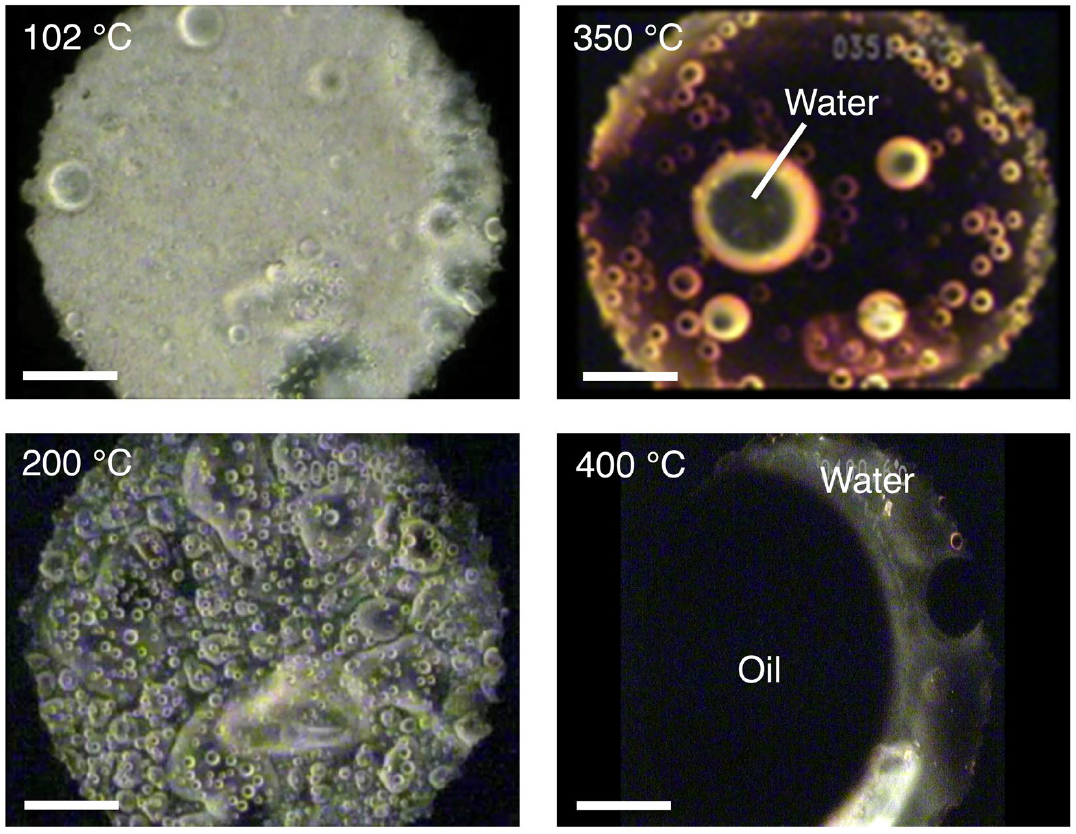Earth is a famously watery planet, but where exactly it all came from is a mystery. Now, researchers in Japan have suggested a new origin story, by showing that water – and petroleum – can form inside clouds of organic matter, at high temperatures and pressure.
Perhaps the leading hypothesis for the origin of Earth’s water is that it was delivered by a bombardment of asteroids and comets long ago. The story goes that these icy objects traveled in from the chilly fringes of the solar system, beyond the so-called “snow line” where it gets cold enough for ice to condense. They then collided with a bone-dry early Earth and deposited huge amounts of water over millions of years.
But there have been problems with that idea. Samples gathered from comets by probes like Rosetta have shown that the water in these objects have very different isotopic ratios than the water in Earth’s oceans.
So for the new study, researchers from Hokkaido University investigated another hypothesis. The team was curious whether the culprit could be organic matter. This stuff drifts around in molecular clouds, and would have been a key component of the nebula that birthed the Sun. Because plenty of this organic matter can be found inside the snow line, Earth’s water could have formed much closer to home.
To test the idea, the team made a simulated version of the organic matter found in interstellar molecular clouds. This analog is an ice mixture rich in carbon monoxide, ammonia and water. Then, the researchers exposed it to the kinds of conditions it would be expected to encounter out there.

Hideyuki Nakano et al., Scientific Reports, May 8, 2020
The team heated the organic matter up to 400 °C (752 °F), while applying pressure using a diamond anvil cell. The sample held together pretty well at 100 °C (212 °F), but by the time it reached 200 °C (392 °F) it had begun to separate into two phases, water and oil. At 350 °C (662 °F), water was bubbling up into bigger droplets. And at 400 °C, black oil was also produced, which was found to be chemically similar to crude oil found inside Earth.
“Our results show that the interstellar organic matter inside the snow line is a potential source of water on the Earth,” says Akira Kouchi, corresponding author of the study. “Moreover, the abiotic oil formation we observed suggests more extensive sources of petroleum for the ancient Earth than previously thought.”
Other alternatives to the comet hypothesis include the idea that most of the water came from the same gigantic planetary collision that formed the Moon, or that the proto-Earth was a wet, muddy ball almost from the very start.
Whatever the case, we may have more information sooner rather than later. More samples collected from comets and asteroids are already inbound.
“Future analyses of organic matter in samples from the asteroid Ryugu, which the Japan’s asteroid explorer Hayabusa2 will bring back later this year, should advance our understanding of the origin of terrestrial water,” says Kouchi.
The research was published in the journal Scientific Reports. The formation of the water in the samples can be seen in the video below.
Organic matter analog producing water and oil by heating
Source: Hokkaido University
Source of Article